
Western Skink (Plestiodon skiltonianus)
Lizards Around Las Vegas, Wildlife Around Las Vegas
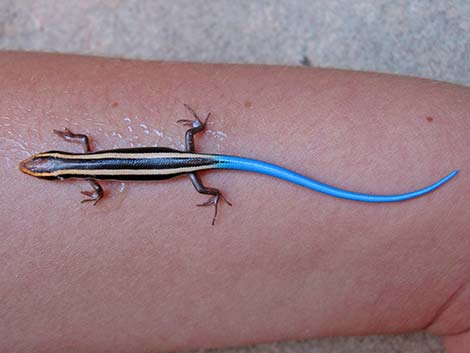 Great Basin Skink juvenile |
General Description: Great Basin Skinks (Plestiodon skiltonianus utahensis) are small, thin, glossy lizards with light and dark stripes down the back and sides. Dark stripe extends onto the tail. Tail blue or gray. This subspecies occurs north of Las Vegas in the Great Basin Desert, not in the Mojave Desert. Taxonomy: Skink Family (Scincidae). Formerly Eumeces skiltonianus. Technical Description: Slim, cylindrical body with smooth, shiny, round scales, and relatively short legs. Body 2-3 inches; total length to 8 inches, giving the impression of a long, thin body and tail. Dorsum striped: broad, light brown stripe down middle of the back; dark and light stripes down the sides. Stripes start ahead of the eye, and dark stripe extends onto the tail. Venter whitish or gray. Stripes fade with age, but always present. Scales round and smooth. Legs thin. During breeding season, orange to pinkish margin of lower jaw and ventral side of tail. Juveniles: Stripes are brighter (more contrasting); a bright cobalt blue tail. Diet: Feeds primarily on insects (crickets, beetles, grasshoppers, flies), spiders, and earthworms. Forage actively through leaf litter and dense vegetation; occasionally dig in loose soil. |
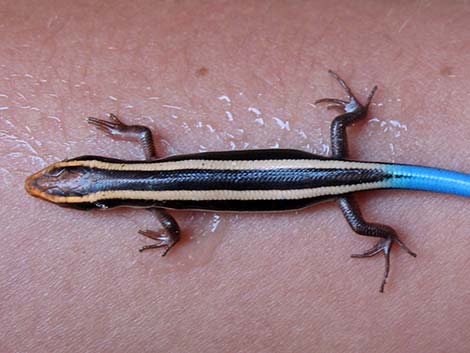 |
Habitat: Occur in a variety of habitats including Pinion-Juniper Woodlands, grassy areas, Mojave Desert Scrub, and talus slopes; often in rocky, brushy areas along streams. Range: The species occurs from south-central British Columbia to southern Baja California, and east to western Montana, Idaho, eastern Utah, north-central Arizona, and southern Nevada. This subspecies occurs from southern Idaho south to southern Nevada and northern Arizona, generally occurring in the Great Basin Desert, but not the Mojave Desert. Breeding: Lay 2-6 eggs in mid-summer, hatch in late summer. Female may stay with the eggs, protecting them from predators. Similar Species: In young Gilbert's Skinks, the dorsal stripe is black; tail may be red or blue. Comments: This small, delicate species has smooth scales that make it difficult to handle, and it loses its tail easily. |
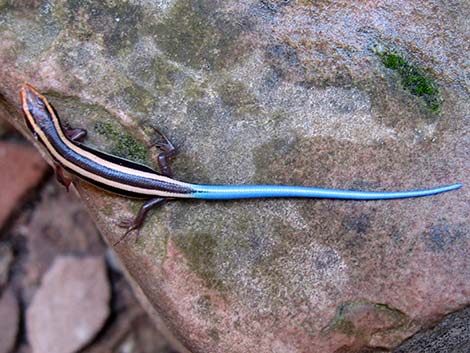 |
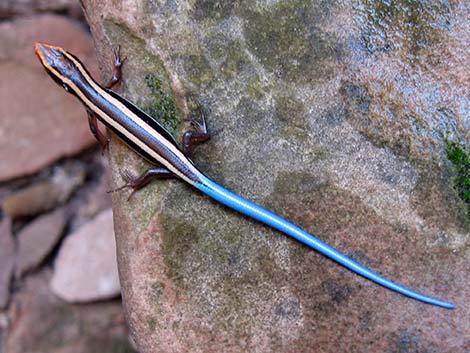 |
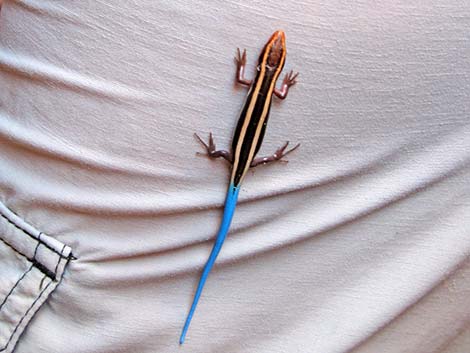 |
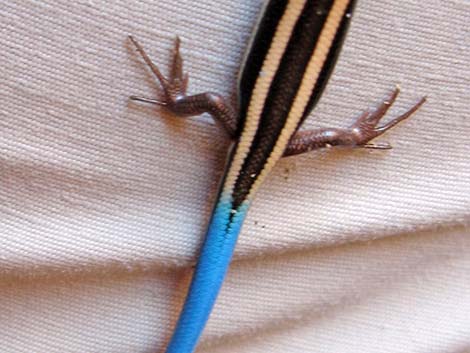 |
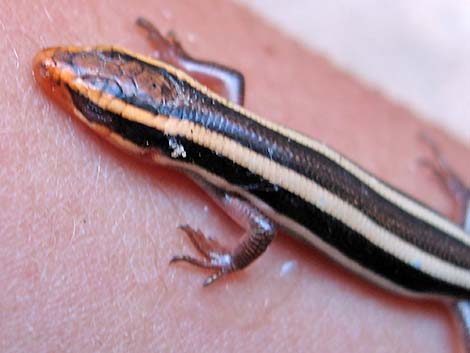 |
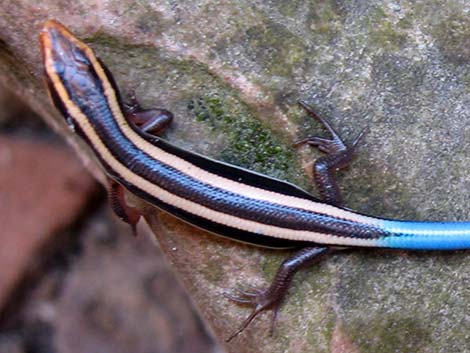 |
Note: All distances, elevations, and other facts are approximate.
![]() ; Last updated 231213
; Last updated 231213
| Lizards Around Las Vegas | Wildlife Around Las Vegas | Glossary | Copyright, Conditions, Disclaimer | Home |